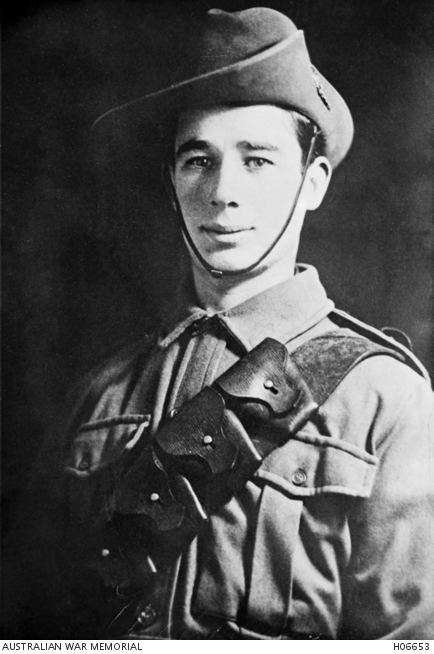Allegiance British Empire Education Stanwell School | Role Armed force officer Name Samuel Pearse | |
 | ||
Years of service 1915 – 1919 (Australia)1919 (UK) Battles/wars First World WarRussian Civil War Similar People Arthur Sullivan, Sidney Godley, Robert Gee, Maurice Dease, John Molyneux | ||
Samuel George Pearse, VC, MM (16 July 1897 – 29 August 1919) was an Australian recipient of the Victoria Cross, the highest award for gallantry in the face of the enemy that can be awarded to British and Commonwealth forces. Serving in the Australian Imperial Force during the First World War, he saw action during the final weeks of the Gallipoli Campaign in 1915 and later on the Western Front from 1916 to 1918. Following the Armistice he fought as part of the North Russia Relief Force with the British Army during the North Russia Campaign in 1919. He was killed after charging a machine gun post during an action at Emtsa, in North Russia, for which he was posthumously awarded the Victoria Cross.
Contents

Early life
Samuel George Pearse was born on 16 July 1897 at Penarth, Glamorganshire, Wales to George Stapleton Pearse and his wife Sarah Ann, née Sellick. Initially educated at Penarth Boarding School, he moved to Australia with his family in 1911, with his father acquiring a property near at Koorlong, near Mildura, Victoria. Pearse later worked as a fruit-picker, labourer, trapper, and as a deck-hand on a paddle-steamer.
Military service
Pearse served in the Militia for two years with the 73rd Battalion, before volunteering for overseas service with the Australian Imperial Force (AIF) during the First World War. At the time of his enlistment in the AIF in July 1915 just before he turned eighteen, Pearse's occupation was as a rabbit-trapper. He sailed from Melbourne with the 9th Reinforcement for the 7th Battalion reaching Gallipoli shortly before the evacuation and spending two weeks in the line there in December 1915.
After transferring to the 2nd Machine Gun Company, assigned to support the 2nd Brigade, Pearse subsequently saw action on the Western Front where he was wounded on 24 August 1916 but soon returned to his unit. On 28 September 1917 he was awarded the Military Medal for an action in single-handedly raiding a German machine gun-post east of Ypres in Belgium:
Normally this man is a runner ....and throughout he showed an utter disregard of danger in carrying messages, guiding parties and in bringing in wounded men on every return run.
Challinger records that Pearse was awarded his Military Medal in the field by General Sir William Birdwood but that at the time Birdwood had run out of medals and decorated Pearse with a strip of medal ribbon. Challinger also references Pearse's army record which quite apart from his awards for valour includes entries for neglect of duty, absence from guard and disobedience to orders. He was promoted to lance corporal on 21 November 1917, and to corporal on 10 April 1918. He was wounded in action for a second time on 19 May 1918. He subsequently returned to England to recover, but did not return to his unit until the end of the war. After undergoing training at the Machine Gun Depot, he was posted the 1st Machine Gun Battalion on 1 December 1918.
Following the Armistice, Pearse was attracted by the prospect of a tour of duty with the North Russia Relief Force and like the other 150 Australian soldiers who volunteered, Pearse was discharged from the AIF on 18 July 1919 and re-enlisted in the British Army as a private soldier. Many of the volunteering Australians had come late to action in First World War but Pearse was a battle-hardened veteran and was soon promoted to sergeant. He was a 22-year-old sergeant in the 45th Battalion, The Royal Fusiliers during the North Russia Campaign under the command of Brigadier General Lionel Sadleir-Jackson when the following deed took place for which he was awarded the VC:
For most conspicuous bravery, devotion to duty and self-sacrifice during the operation against the enemy battery position north of Emtsa, North Russia on the 29th August 1919. Sergeant Pearse cut his way through enemy barbed-wire under very heavy machine-gun and rifle fire and cleared a way for the troops to enter an enemy battery position. Seeing that a blockhouse was harassing our advance and causing us casualties, he charged the blockhouse single-handed, killing the occupants with bombs. This gallant non-commissioned officer met his death a minute later and it was due to him that the position was carried with so few casualties. His magnificent bravery and utter disregard for personal danger won for him the admiration of all troops.
Samuel Pearse was buried at Obozerskay on the railway between Emtsa and Archangel, North Russia and his name is commemorated in the war cemetery at Archangel. His Victoria Cross, Military Medal and 1914–15 Star are on display under his photo in the Hall of Valour at the Australian War Memorial (AWM) in Canberra. Two other service medals were issued but their whereabouts is unknown.
Family life
While on leave in England in January 1918 Pearse met Kitty Knox, an ambulance driver serving in the Women's Army Auxiliary Corps. They were engaged in May 1918 and that same month spent time together while Pearse was convalescing after suffering a foot wound. They were married on 1 June 1919 in Durham and when Kitty became pregnant they had decided to delay returning to Australia. The couple had a daughter, Victoria Catherine Sarah Pearse, born in February 1920, after his death. Kitty and Victoria later emigrated in May 1920 to Australia and Kitty married Albert Rose.
